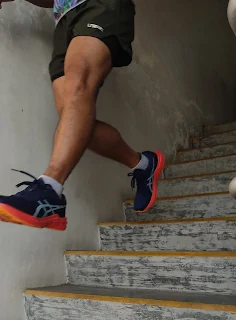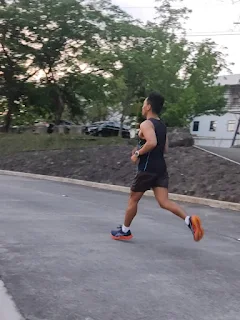Long-distance running requires proper preparation, training, and discipline. Proper fueling is essential to ensure that runners have the energy and stamina to complete the distance they set out to achieve. And this is one of the crucial aspects that we often overlook.
Many runners make mistakes when it comes to fueling, which can lead to poor performance, fatigue, and even injury.
Let's discuss the importance of proper fueling during a long-distance run and share tips on how to fuel correctly.
Common Mistakes Runners Make When It Comes to Fueling:
Before we delve into the specifics of fueling, it's essential to mention the common mistakes runners make when it comes to fueling.
These mistakes can be detrimental not only to our performance but even to our health.
Some of the common mistakes include:
- Not eating enough before a long-distance run
- Eating too much before a run, which can cause bloating and stomach discomfort
- Not hydrating enough before, during, and after a run
- Relying too much on sugary snacks and drinks for energy
- Not fueling at all during a long-distance run
- Over-relying on sports drinks or gels without considering real food options
Pre-Run Fueling:
The food you eat before a long-distance run can make or break your performance. Eating a balanced meal that is rich in carbohydrates and proteins can help provide sustained energy throughout your run. It's best to eat your pre-run meal and hydration 2 to 3 hours before your run to allow your body enough time to digest the food.
Here are some food options that are easy to digest and provide sustained energy:
- Oatmeal with fruit: Oatmeal is a great source of carbohydrates, while fruits like bananas, apples, or berries can provide sustained energy.
- Toast with peanut butter: Toast provides carbohydrates, while peanut butter is an excellent source of healthy fats and protein.
- Smoothie: A smoothie made with fruit, yogurt, and milk or a plant-based milk alternative can provide you with sustained energy.
In addition to eating a balanced meal, it's crucial to also hydrate before any endurance workout. Drinking water or sports drinks can help ensure that your body is properly hydrated. An additional 8 to 10 ounces of water or sports drink 10-15 minutes before your run is also important.
 |
| High-energy pre-run meal |
Proper pre-run fueling can help ensure that you have enough energy to complete your run without feeling fatigued or sluggish. Make sure to experiment with different food options to see what works best for your body.
During-Run Fueling:
Fueling during a long-distance run is just as crucial as pre-run fueling. Once you hit the road, it's essential to keep fueling to keep your energy levels up. The human body can only store so much glycogen, which is your body's main fuel source.
Without proper fueling during a run, you can hit a wall, and your performance will suffer. So, what are some fueling options?
- Energy gels: These are small, portable packets of concentrated carbohydrates that can be easily consumed while running. Energy gels are designed to provide a quick burst of energy when you need it most. However, make sure not to consume too many energy gels as they can be hard on your stomach (trust me).
- Sports drinks: These drinks are formulated with carbohydrates, electrolytes, and fluids, which can help replenish your energy levels and hydrate you at the same time. Sports drinks are easily absorbed by the body, making them an excellent option for fueling during a long-distance run.
- Real food: Options such as bananas, energy bars, and pretzels can also provide sustained energy during a long-distance run. However, make sure to choose foods that are easy to digest and won't cause stomach discomfort.
It's essential to determine the right amount of fuel to consume during a long-distance run. Consuming too much fuel can lead to stomach discomfort, while consuming too little can lead to fatigue and a drop in energy levels. As a general rule of thumb, aim to consume 30-60 grams of carbohydrates per hour of running.
Make sure to drink water or sports drinks every 10-15 minutes to stay hydrated. If you're running for more than an hour, consider bringing a hydration pack or a handheld water bottle to ensure that you have access to fluids throughout your run.
However, this may still vary depending on your body size, running intensity/pace, personal preference, and weather conditions. Experiment with different options to find what works best for you.
Post-Run Fueling:
After you cross the finish line, it's time to refuel your body. The food you eat after your run can help your body recover and repair itself. Proper post-run fueling can help reduce muscle soreness, replenish glycogen stores, and promote muscle recovery.
Here are some food options you can consider after a long-distance run:
- Protein shake: Protein shakes are an excellent option for post-run fueling as they are easily absorbed by the body, making them an excellent option for muscle recovery.
- Chocolate milk: Chocolate milk is an excellent option as it provides a good balance of carbohydrates and protein, which can help replenish glycogen stores and promote muscle recovery.
- Banana with nut butter: Bananas are rich in carbohydrates, which can help replenish glycogen stores, while nut butter is a good source of protein and healthy fats.
- Grilled chicken or fish with brown rice and vegetables: This meal is a great source of protein, carbohydrates, and healthy fats, making it an excellent option for post-run fueling.
Aim to drink at least 16-20 ounces of water or sports drink within 30 minutes of completing your run. Drinking water or sports drinks can help replenish fluids lost during your run and prevent dehydration.
By refueling properly after your long-distance run, you'll help your body recover and prepare for your next run. Remember, it's essential to refuel with a combination of carbohydrates and protein, rehydrate properly, and promote muscle recovery after a long-distance run.
Whether you're a seasoned ultramarathoner or a teenager just starting with long-distance running, fueling your body with the right food and fluids can make all the difference.
By following these simple tips, you'll be able to achieve your running goals and perform at your best. So next time you lace up your running shoes, remember to fuel your body properly and let nothing hold you back!









































